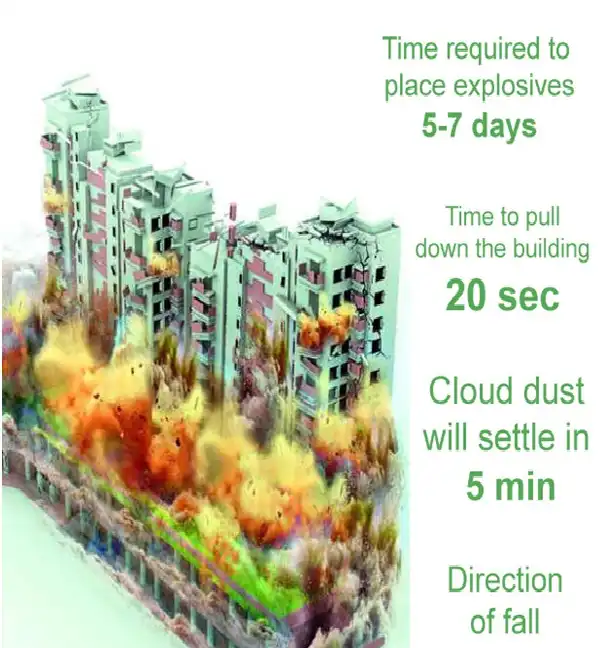Four waterfront high rise complexes built in violation of CRZ norms are to be pulled down in Kochi in accordance with a Supreme Court order passed. Earlier on September The Supreme Court refused to entertain a plea of flat owners seeking stay on its order on demolition of four apartment complexes in Kochi’s Maradu which were built in violation of Coastal Regulation Zone norms. “What is happening there we know. We will fix responsibility on those responsible. This is a colossal loss to the coastal zone area. It’s a high tide area and hundreds of illegal structures have come up in the coastal zone”, the court bench said.
The first CRZ notification of 1991 signified the government’s intent to protect the coastal environment and its resource-dependent population by regulating land use along the coast. With the liberalisation of the economy in the subsequent years, the notification saw multiple amendments, where provisions were diluted or circumvented to promote “economic growth.”
Besides, it directed freezing of the assets of the builders and promoters who were involved in the construction of illegal buildings in the coastal zone areas of Kochi.The court had clarified that its primary concern was that no construction should have been carried out at the eco-fragile coastal zone and the question was not regarding any individual.

The state government had submitted a plan under which in 138 days the structure would be demolished — including 90 days for demolition and 38 days for removing debris.
The Kerala government has set January 9 as the deadline, though about a week ago flat owners filed a fresh plea against the verdict. The luxury complexes—which have 325 flats spread over 8 lakh sqft—are to be razed through controlled implosions, with an attempt at minimal environmental impact.
The process
The demolition agency is Mumbai based Edifice Engineering, which specialises in bringing down buildings and industrial plants, and making structural alterations. The first to go would be Jains Coral Cove.

Blast Details
PRIMARY BLASTS- To implode the building, 250 kilogram of power gel explosives will be used. Explosives will be placed at five points in columns on the ground floor, and three points in columns on the 1st, 3rd, 8th and 14th floors. Also, for this purpose, 32 millimetre-diameter holes are being drilled into the columns.
SECONDARY BLASTS- It will take place on the 2nd, 5th and 11th floors. Shear walls will be drilled for explosives.
Debris and soil impaction
Debris is expected to pile up into a primary heap of height 18 metre. Heaps of 8 metre expected towards backwaters and 12 metre on opposite side. To reduce the impact of vibration during implosion, a 1.5 metre-high bed of soil will be placed around the building to absorb shocks. To prevent scattering of debris and spread of dust, geotextile tubes will cover the building. Metal sheets will be placed around the structure’s boundary. Some amount of dust will spread. The extent will be within a radius of 50 metre. Third party insurance will cover people living in a radius of 100 metre.

The maximum velocity of vibration (mvv) during demolition will be 15mm/sec. In India, the mvv limit is 35mm/sec. A level above this can cause cracks in nearby buildings. It will generate 26,400 tonnes of debris. The total of all four complexes will be 76,350 tonnes. Separate contract is invited for disposal . The total cost to pull down all four buildings will be Rs 2.3 crore. State government will incur the cost initially, and will recover it later from builders.

